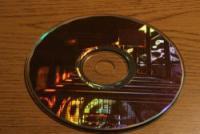
How long would it take for you to write 500 GB of data? If you were using an old fashioned DVD burner, it would take a whole lot of time, and a lot of disks as well. Now we have GEs announcement that scientists working at the companys Optical Research Unit have managed to develop the technology for writing 500 GB of data on new holographic disks at the speed at which we write Blu-ray disks. For many years GE has been conducting research on holographic disks. Many other technology companies have also been engaged in similar research.
In 2009, GE had achieved a breakthrough in cramming 500GB on standard-sized optical discs. Now they have managed to speed up the process by which such disks get written. The technology in holographic disks works by making holograms smaller, and coolest thing is that it uses systems that are quite similar to the laser systems used to read ordinary CDs, DVDs, Blu-ray discs in use today. So whenever the holographic disks of gargantuan storage space appear in the market, they might turn out to be backward compatible with older Blu-ray discs.
The advent of Flash drives, which are easy to use, and also of cloud computing, which offers the possibility of accessing data anytime and anywhere, has to a large extent negated the need for physical media like optical disks. But micro-holographic technology, which can produce disks with storage of 100 GB to 1 TB, can still prove very beneficial for long-term archival purposes. A Flash drive is notoriously susceptible to being corrupted, but a holographic disk can easily last for more than 100 years.
The disk that the Optical Research unit at GE is engaged in developing is made out of polycarbonate material with millions of the micro-holograms stamped onto it. Whenever the light source, whose beam is of the same wavelength as that of a Blu-ray drive, impacts on the disc, it has the effect of deleting the necessary amount of holograms to represent the data, which it is recording. The data is encoded in light patterns that are stored in the light-sensitive material. As the holograms act like microscopic mirrors refracting light patterns when a laser shines on them, each holograms recorded data can easily be retrieved and deciphered.
At least in theory, the holographic disk should turn out to be backwards compatible with the Blu-ray format, as both the systems are based on similar theory. It is not as if the theory of holographic disks is of new origin. The first research papers on the subject were published in the 1960s. Since then research has been going on to make holographic storage a practical, cost-effective technology. The disks that GE is making are expected to be launched in the year 2012.
InPhase Technologies, a spin-off of Bell Labs of Alcatel-Lucent, is also in the race to introduce holographic storage systems for specialized markets like video production, broadcast media, storing of medical images, financial records, etc. The possibilities are limitless. From home users to big companies and governmental entities, everyone could benefit from this technology, which offers secure and abundant storage. The technology being developed by InPhase Technologies is called Polytopic recording. Its holographic approach is based on the principle of recording the depth of the media in three dimensions. The system records and reads 1 billion bits of data in every flash of light.
In Polytopic recording, a laser beam is split into two, when holographic image has to be recorded. While the signal beam carries the data, the reference beam marks the position where the data is written and reads it. The data is arranged in a checkerboard pattern of light and dark pixels, each pixel being formed when the two beams intersect. As of now holographic storage has not been on a path to mainstream use, but that could chance as early as next year. Over a period of time the price of the disks could come down and then they could become as popular as DVDs and Flash Drives.
For the average user, what does a disk of 500 GB mean? Perhaps it means that you can stash away all your photos, videos, games, documents, and music on a single thin disk, which is probably going to outlast you by many years, if not decades. Imagine storing your entire stash of movies, games, music and all kinds of files on a single disk, which is of the size of a credit card! Nothing can beat that.

 In
In
Comments
Viagra Psychische Impotenz
Viagra Psychische Impotenz MurnErubsJub https://bbuycialisss.com/# - Buy Cialis Tastubsest Ward Color ScevaKam <a href=https://bbuycialisss.com/#>Buy Cialis</a> GofGlofoda Clomid Alcool
Viagra Psychische Impotenz
Viagra Psychische Impotenz MurnErubsJub https://bbuycialisss.com/# - Buy Cialis Tastubsest Ward Color ScevaKam <a href=https://bbuycialisss.com/#>Buy Cialis</a> GofGlofoda Clomid Alcool
Add new comment